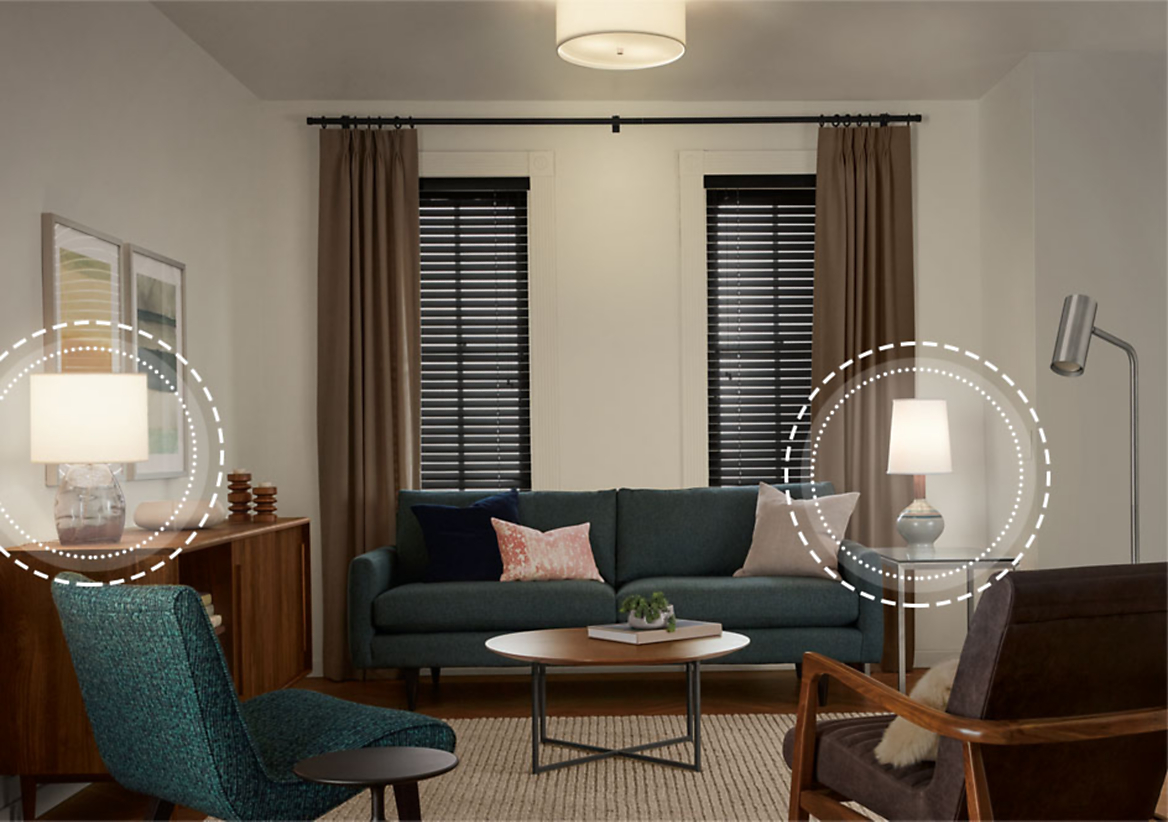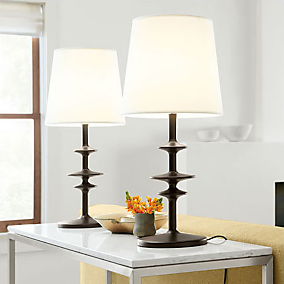How to Light Your Room
Lighting is an essential element to room design. Use a mix of lighting sources in combination with the room's natural light to maximize function, eliminate dark corners and set a mood.
Shop LightingLayer Your Lighting

Start With Primary Lighting
Think of this as the first light you turn on when you walk into a room. It’s the primary source of light and provides overall brightness for the space.


Add Accent Lighting
Accent lighting creates an inviting ambience while brightening dark corners. It can also be used to highlight artwork or architectural features.


Include Task Lighting
Often associated with desk lamps, task lighting is also found in many pendants, sconces and floor lamps that provide direct, focused illumination.

Lighting Tips by Room
Considerations for Every Room
- Think about other light sources in your room, including overhead or recessed lights and natural light from windows or skylights, and how the light changes throughout the day.
- Lighting with a three-way socket or dimmer switch allows you to adjust the light level, making it more versatile.
- Use light bulbs with the same color temperature throughout a room for consistency.
Living Room Lighting Ideas

- Place task lighting next to areas where you often read or do similar work.
- Flushmount or semi-flushmount fixtures are a smart solution in rooms with lower ceilings.
Dining Room and Kitchen Lighting Ideas

- Consider lighting that creates a pool of light bright enough to ensure the entire table is illuminated.
- Warm white LED bulbs, between 2700-3500 degrees Kelvin, provide similar lighting to incandescent bulbs. Add a dimmer switch to control the ambience.
Bedroom Lighting Ideas

- Flushmount or semi-flushmount fixtures are a smart choice in bedrooms with lower ceilings.
- Using a pendant with a diffuser or a fixture that directs light upward will keep the light from shining directly into your eyes.
Office Lighting Ideas

- Smaller desks require lamps with a small footprint while larger workspaces benefit from a single lamp with an adjustable arm or multiple lamps.
Space-saving Lighting Ideas

- Tandem wall and ceiling mounts make it easy to hang pendants without having to hardwire. Simply run your pendant into the Tandem mount and attach it to the wall.
Get Inspired




